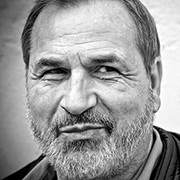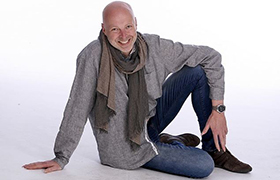Mеn’ѕ Hеаlth аt 60+
When you observe healthy habits, you may experience the same sense well being as before (or even better). It might appear too much effort and not worth it to embark on something new. But, even small alterations can enhance your health. One minor adjustment you can make is including some activity in your day-to-day life. Another variation is including extra fiber in your diet or making other changes concerning food, such as embracing a Mediterranean diet.
What happens if I was previously very inactive? Will it make an impact if I begin now? Yes. Being physically active is healthy for individuals of any age. Among people who are older, falling many times leads to disability and injury. Your muscles and bones become stronger due to physical activity. If your muscles are strong, your possibility of falling decreases. In case you fall, there is less likelihood of strong bones breaking.
Being physically active is healthy for your brain also. Research indicates that individuals who engage in simple workouts (for instance, waking fast) often have a better ability to make decisions compared to physically inactive people. Even minimal levels of physical activity control a lot of health issues such as chronic diabetes and heart disease. For people suffering from these conditions, not working out poses more risk compared to an injury that is connected to exercise.
Discuss your plans with your doctor before you begin. The chances are high that your muscles will be painful when you initially become more active; but it should not discourage you from continuing. Mild pain will disappear in a few days, as you get more accustomed to working out.
Currently, what is the ideal way to exercise?
For the majority of individuals, walking is the most uncomplicated activity to do. Experts recommend 30 minutes of working out most days each week. You do not, however, need to do the whole 30 minutes at one go. Make an effort to walk for fifteen minutes two times every day or for ten minutes thrice every day.
Individuals who have begun exercising later in life state that working out with a partner encourages one to continue. Some people suggest starting or becoming part of a walking group with buddies or neighbors. Others recommend obtaining a dog that requires you to walk it. If walking does not excite you, try to dance or tend the garden. Go for a swim or fishing. Yoga or Tai chi are illustrations of other kinds of activity that are worth putting in the time to study and practice. Working out can be fun and healthy also for you.
If walking does not excite you, try to dance or tend the garden. Go for a swim or fishing. Yoga or Tai chi are illustrations of other kinds of activity that are worth putting in the time to study and practice. Working out can be fun and healthy also for you.
What of strength training? When you have strong muscles, activities like standing up after sitting or holding open a door become a lot simpler. If you wish to lift weights, begin with a weight of 1 or 5 pounds. If weights are not accessible to you, you can utilize a book, a can of soup or a bottle full of water. Store your weights in the same area as your television and engage in some workouts as you watch. Another method of building muscle is using a resistance band (also referred to as an exercise band). Resistance bands provide adaptability and are available in varied lengths. They are mostly used to make our upper leg and arm muscles strong.



Why do I need to consume more fiber?
There are three ways in which fiber can enhance your health:
- It aids to improve the functioning of your colon and assists to prevent constipation
- It lowers the danger of a heart ailment, colon cancer, and type-2 diabetes
- It assists to reduce your blood cholesterol level
Men aged more than 50 years need to obtain 30 g of fiber each day. Women aged 50 and over need 21 g each day. I do not wish to begin consuming healthy food. How can I obtain extra fiber without completely altering my diet?
It is not necessary for you to alter your diet suddenly. Make an effort to implement small changes gradually. For instance, if you consume two pieces of white toast for breakfast, substitute one of them with some whole grain bread. In case you drink orange juice each day, instead, eat one orange for three days each week. Instead of fruit juices, eat whole fruit in plenty. If you like salty snacks, rather than potato chips, try low-fat popcorn. To some people, it is useful to pay attention to including one high-fiber meal at every meal or snack time.
Fiber-rich foods
- Unprocessed flax seed or wheat bran meal
- Unrefined breakfast cereals
- Rye flours and whole wheat
- Grainy bread like rye, whole wheat or pumpernickel
- Fresh fruits like apples, pears, and berries
- Dried fruits like figs, prunes, and apricots
- Vegetables like carrots, green peas, and prunes
- Legumes like baked beans, chickpeas, and navy beans
- Vegetables and fruits are an excellent healthy inclusion in your diet. They are not just rich in fiber but rich in other minerals and vitamins also
The amount of exercise you do and what you eat are habits. Implementing healthy habits can initially be hard. When you take small steps at first and reward yourself for every step you take, this will have an impact on how nice you feel. It might be simpler for you to be more physically active and consume extra fiber if you believe each day and each meal is an opportunity to do something sweet for yourself.
What other changes in diet enhance health?
The change that we are most aware of is the Mediterranean diet. This method of eating highlights consuming healthy fats (such as the ones in nuts, avocados, and olive oil), whole grains, ocean fish, and vegetables. It is all right to take wine in moderation, and healthy activity forms a part of the way of life. Less sugary treats, carbohydrates and red meat constitute the menu.
There is proof that the Mediterranean diet lowers the danger of heart attacks and deaths due to other reasons by more than 50% in individuals who are between 70 and 90 years of age.

Why working out is vital as you age
Working out and physical activity can assist you to remain energetic, self-reliant and healthy as you age. On average, a lot of grownups of 60 years and more spend 10 hours or more every day lying down or sitting. It makes them the most inactive age group.
Their inactivity is costing them a lot; they have higher levels of obesity, falls, heart ailment and premature death, in contrast with the general population. As you age, remaining active becomes even more vital, if you wish to stay healthy and sustain your self-reliance. If you fail to remain active, all that you have found pleasurable and taken at face value may begin to become a somehow difficult.
You might strain to engage in simple, enjoyable things like playing with your grandchildren, taking a walk to the shops, going to meet friends and leisure activities. You may begin to experience pains and aches you did not have previously and have reduced energy to venture out. You might also be more susceptible to falling. All this can reduce the ability to take care of yourself and engage in activities you enjoy.
Solid confirmation
There is substantial confirmation that individuals who are active have reduced the risk of a heart ailment, stroke, depression, type-2 diabetes, dementia and some cancers. If you wish to remain free of pain, lower your danger of mental sickness, manage to go out and stay self-reliant even in old age, it is wise for you to stay active.
It is that uncomplicated. There are many methods for you to remain active and it does not just involve working out. A consultant in health promotion, Dr. Nick Cavill, states, ‘As people age and the function of their body decline, physical activity assists to reduce the pace of that decline.’ ‘It is crucial for them to stay active or even raise their activity as they age.’
Many people wish to still interact with their society, that is, their friends, neighbors, and community. When they are energetic, they can remain assured they will keep doing that. With the advancement of age, most people long to continue interacting with Their society, friends, neighbors and community. Being energetic can ensure they will keep doing that.
What does physical activity entail?
Physical activity involves anything that keeps your body in motion. It can be inclusive of gardening, walking or leisure sport.
- Target a minimum of 150 minutes of light activity each week
- It would be best if you attempt to do something each day, ideally in activities of 10-minutes or more sessions
- One method of attaining 150 minutes of activity is doing 30 minutes a minimum of five days each week
Illustrations of aerobic activities of moderate-intensity are:
- Walking quickly
- Water aerobic
- Playing doubles-tennis
- Riding a bike on flat surface or with few hills
- Pushing a lawn mower
Every day tasks such as cooking, shopping or housework is not relevant in your 150 minutes as the energy is not sufficiently strenuous to increase your heartbeat, even though they assist in breaking up periods of inactivity.
Apart from your target of 150 minutes, make an effort to engage in some activities, which exercise your muscles. It may be inclusive of:
- Weight training
- Heavy gardening
- Carrying weighty loads
- Discover the level of activity older grownups should carry out to maintain health
- In addition to frequent physical activity, try to lower the quantity of time you spend seated down during the day
- It signifies not watching the TV for lengthy periods, using the computer, driving and sitting to talk, read or listen to music
Take action
Your situation will determine the step you take. However, it is advisable to do activities that give you pleasure. If you are active already, you might deem it helpful to discover that 75 minutes of vigorous activity for more than one week is as beneficial as 150 minutes of mild activity. According to study, there is always time to embrace a more active way of life and enjoy the health benefits.
For instance, older grownups that are active shall lower their danger of heart ailment and stroke, to the same level as more young individuals who are active. If you have not been active for some time, you can slowly set up your activity to reach advised levels. As you do this, you will go on improving, and you shall lower your danger of falls and other illnesses. Dr. Cavill says, ‘The ones who begin from inception enjoy the greatest benefits.’
‘It involves shifting from an inactive way of life to one that is moderately active, which makes a huge difference to your wellbeing. As you do more, this increases the health benefits.’ What level of physical activity do senior people of 60+ and more require to maintain healthy? To remain healthy or to enhance health, senior people should carry out two kinds of physical activities every week: strength and aerobic workouts.



Tips for senior people of 60+
Grownups of 60+ years who are mostly healthy and do not have any health issues which might restrict their movement need to attempt to be active every day, and they should do:
- A minimum of 150 minutes of mild aerobic activity like walking or cycling each week and strength workouts on two or more days each week, that exercise all the critical muscles (back, chest, abdomen, legs, hips, arms, and shoulders).
- 75 minutes of strenuous aerobic activity like running or a singles tennis game each week and
- Strength workouts two or more days each week that exercise each of the key muscles (hips, legs, stomach, shoulders, chest, and arms).
- A combination of gentle and strenuous aerobic activity each week. For instance, two 30-minute runs and 30-minutes of fast walking is equivalent to 150 minutes of mild aerobic activity.
- Strength workouts on two days a week or more which exercise all the key muscles (arms, chest, back, hips, legs, shoulders, and stomach).
- A popular belief is that a minute of strenuous activity offers similar health benefits as a couple of minutes of mild exercise.
You also need to attempt to split lengthy intervals of sitting with moderate activity, since being inactive is now thought to be a separate risk element for disease, despite the level of workouts you engage in. Senior people in danger of falls like individuals with weak legs, poor equilibrium, and some medical problems need to work out to enhance coordination and balance at a minimum of two days each week. Strenuous activity makes your breathing fast and hard. If you are working at this rate, you cannot manage to speak a few words without stopping to breathe. 75 minutes of strenuous activity can deliver the same health benefits as 150 minutes of moderate exercise.
Make an effort to do light work after sitting for a long time, since being inactive is now believed to be another risk element for illness, despite how much you work out. Senior people are in danger of falling; for instance, people whose legs are weak, have poor balance and some illnesses need to workout to enhance coordination and stability for a minimum of two days each week. Yoga, dancing, and tai chi are examples.
What is moderate aerobic activity?
Illustrations of activities that need moderate effort for the majority of individuals are:
- Walking
- Line and ballroom dancing
- Water aerobics
- Cycling on flat surface or where hills are few
- Playing doubles-tennis
- Canoeing
- Pushing a lawn mower
- Give the NHS Fitness Studio aerobic video workouts a try
Moderate activity is going to increase your heartbeat and quicken your breathing. You will also feel warmer. One manner of gauging whether you are working out at a moderate rate is if you can talk but can’t sing a song’s words.
Everyday tasks like cooking, housework or shopping do not apply in your 150 minutes, as the effort is insufficient to make your heart race. Despite this, they are vital, since they give a break after instances of sitting.
What is strenuous aerobic activity?
There is sufficient proof that strenuous activity can generate health benefits that surpass the ones of moderate exercise. Strenuous activity makes you breath quickly and fast. If you are exercising at this rate, you will just manage to utter a few words without stopping to breath.
To summarize, 75 minutes of strenuous activity can provide the same health benefits as 150 minutes of moderate activity. Which are the activities that make muscles stronger? Muscle strength is essential for:
- All everyday movement
- Creating healthy bones and maintaining them
- Controlling blood pressure and regulating blood sugar
- Sustaining a healthy weight
Workouts that strengthen muscles are counted in sets and repetitions. A repetition refers to a single complete motion of an activity like a sit-up or a bicep curl. A set entails a group of repetitions. For every strength workout, attempt to do:
- A minimum of one set
- 8 – 12 repetitions in every set
To enjoy health benefits from strength workouts, you need to engage in them up to when you experience difficulty in completing another repetition. A lot of methods exist for you to make your muscles stronger. It can be at the gym or home. Illustrations of muscle-strengthening activities are inclusive of:
- Transporting or shifting hefty loads like groceries
- Events connected to jumping and stepping, like dancing
- Intense gardening like shoveling or digging
- Workouts that utilize your body mass for resistance, for instance, sit-ups or push-ups
- Lifting weights
- Yoga
Try Strength and Flex; this is a workout plan of five weeks for beginners, to enhance your flexibility and strength. You can engage in activities that make your muscles stronger on the same day or on diverse days as your aerobic activity; whichever suits you best. Workouts to strengthen muscles are not aerobic activities. Therefore, you shall require doing them separate from your aerobic exercise of 150 minutes.












